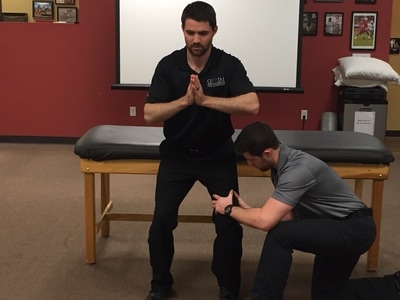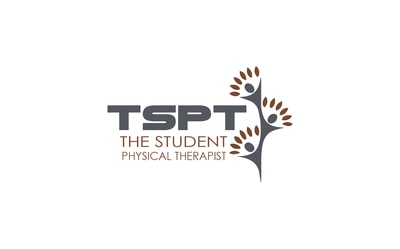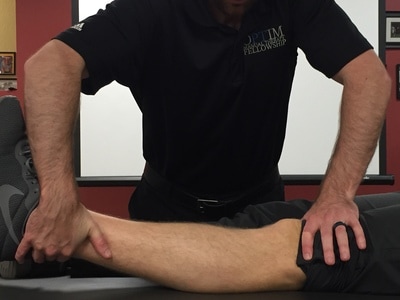- Home
- About Us
- TSPT Academy
- Online Courses
-
Resources
- Newsletter
- Business Minded Sports Physio Podcast
- Day in the Life of a Sports PT
- Residency Corner
-
Special Tests
>
-
Cervical Spine
>
- Alar Ligament Test
- Bakody's Sign
- Cervical Distraction Test
- Cervical Rotation Lateral Flexion Test
- Craniocervical Flexion Test (CCFT)
- Deep Neck Flexor Endurance Test
- Posterior-Anterior Segmental Mobility
- Segmental Mobility
- Sharp-Purser Test
- Spurling's Maneuver
- Transverse Ligament Test
- ULNT - Median
- ULNT - Radial
- ULNT - Ulnar
- Vertebral Artery Test
- Thoracic Spine >
-
Lumbar Spine/Sacroiliac Joint
>
- Active Sit-Up Test
- Alternate Gillet Test
- Crossed Straight Leg Raise Test
- Extensor Endurance Test
- FABER Test
- Fortin's Sign
- Gaenslen Test
- Gillet Test
- Gower's Sign
- Lumbar Quadrant Test
- POSH Test
- Posteroanterior Mobility
- Prone Knee Bend Test
- Prone Instability Test
- Resisted Abduction Test
- Sacral Clearing Test
- Seated Forward Flexion Test
- SIJ Compression/Distraction Test
- Slump Test
- Sphinx Test
- Spine Rotators & Multifidus Test
- Squish Test
- Standing Forward Flexion Test
- Straight Leg Raise Test
- Supine to Long Sit Test
-
Shoulder
>
- Active Compression Test
- Anterior Apprehension
- Biceps Load Test II
- Drop Arm Sign
- External Rotation Lag Sign
- Hawkins-Kennedy Impingement Sign
- Horizontal Adduction Test
- Internal Rotation Lag Sign
- Jobe Test
- Ludington's Test
- Neer Test
- Painful Arc Sign
- Pronated Load Test
- Resisted Supination External Rotation Test
- Speed's Test
- Posterior Apprehension
- Sulcus Sign
- Thoracic Outlet Tests >
- Yergason's Test
- Elbow >
- Wrist/Hand >
- Hip >
- Knee >
- Foot/Ankle >
-
Cervical Spine
>
- I want Financial Freedom
- I want Professional Growth
- I want Clinical Mastery
Thessaly Test
Purpose: To assess for a lesion in the meniscus.
Test Position: Standing.
Performing the Test: Have the patient stand on the test leg with the knee bent to 20 degrees of flexion (the opposite leg is flexed behind the patient). The patient may place his/her hands on the hands of the examiner for balance during the test. The patient then rotates the knee medially and laterally 3 times each direction. A positive test occurs when the patient experiences joint line discomfort or if locking/catching occurs.
Diagnostic Accuracy: Sensitivity: .89; Specificity: .92; +LR: 11.1; -LR: .12 ("Diagnostic accuracy of a new clinical test (the Thessaly test) for early detection of meniscal tears"). Sensitivity: .90; Specificity: .98; +LR: 39.3; -LR: .09 ("The Thessaly test for detection of meniscal tears: validation of a new physical examination technique for primary care medicine").
Importance of Test: According to Neumann, the menisci are crescent-shaped structures that help increase the concavity of the tibia for acceptance of the femoral condyles. They attach anteriorly and posteriorly to the intercondylar area of the tibia. Laterally, they adhere to the tibia loosely via the coronary ligaments (this allows some sliding of the menisci!). With its concave shape, the meniscus acts to decrease compressive forces of the knee by increasing the force distribution of the femoral condyles onto the tibia. Due to decreased blood supply to the inner aspects of each meniscus, an injury in this area is less likely to heal. This test tries to maximally stress the ligament by placing the affected limb in full weight-bearing (single-limb stance) and a flexed position combined with rotary forces. The meniscus is usually injured through twisting motions on a slightly bent knee or sometimes through strong contractions of the semimembranosus, quadriceps, or popliteus, due to their attachments to the menisci. Whenever an injured meniscus is present or a meniscus is removed, the force distribution characteristic is loss and increased compressive forces are placed on the knee. These individuals have been found to have increased development of arthritis!
Note: these tests should only be used by properly trained health care practitioners
Test Position: Standing.
Performing the Test: Have the patient stand on the test leg with the knee bent to 20 degrees of flexion (the opposite leg is flexed behind the patient). The patient may place his/her hands on the hands of the examiner for balance during the test. The patient then rotates the knee medially and laterally 3 times each direction. A positive test occurs when the patient experiences joint line discomfort or if locking/catching occurs.
Diagnostic Accuracy: Sensitivity: .89; Specificity: .92; +LR: 11.1; -LR: .12 ("Diagnostic accuracy of a new clinical test (the Thessaly test) for early detection of meniscal tears"). Sensitivity: .90; Specificity: .98; +LR: 39.3; -LR: .09 ("The Thessaly test for detection of meniscal tears: validation of a new physical examination technique for primary care medicine").
Importance of Test: According to Neumann, the menisci are crescent-shaped structures that help increase the concavity of the tibia for acceptance of the femoral condyles. They attach anteriorly and posteriorly to the intercondylar area of the tibia. Laterally, they adhere to the tibia loosely via the coronary ligaments (this allows some sliding of the menisci!). With its concave shape, the meniscus acts to decrease compressive forces of the knee by increasing the force distribution of the femoral condyles onto the tibia. Due to decreased blood supply to the inner aspects of each meniscus, an injury in this area is less likely to heal. This test tries to maximally stress the ligament by placing the affected limb in full weight-bearing (single-limb stance) and a flexed position combined with rotary forces. The meniscus is usually injured through twisting motions on a slightly bent knee or sometimes through strong contractions of the semimembranosus, quadriceps, or popliteus, due to their attachments to the menisci. Whenever an injured meniscus is present or a meniscus is removed, the force distribution characteristic is loss and increased compressive forces are placed on the knee. These individuals have been found to have increased development of arthritis!
Note: these tests should only be used by properly trained health care practitioners
References:
Harrison BK, Abell BE, Gibson TW. "The Thessaly test for detection of meniscal tears: validation of a new physical examination technique for primary care medicine." Clin J Sport Med. Jan 2009;19(1):9-12. Web. 09/05/2012.
Karachalios T, Hantes M, Zibis AH, Zachos V, Karantanas AH, Malizos KN. "Diagnostic accuracy of a new clinical test (the Thessaly test) for early detection of meniscal tears." The Journal of bone and joint surgery. Sep 2007; 37(9):541-550. Web. 09/05/2012.
Neumann, Donald. Kinesiology of the Musculoskeletal System: Foundations for Rehabilitation. 2nd edition. St. Louis, MO: Mosby Elsevier, 2010. 526-528. Print.
Harrison BK, Abell BE, Gibson TW. "The Thessaly test for detection of meniscal tears: validation of a new physical examination technique for primary care medicine." Clin J Sport Med. Jan 2009;19(1):9-12. Web. 09/05/2012.
Karachalios T, Hantes M, Zibis AH, Zachos V, Karantanas AH, Malizos KN. "Diagnostic accuracy of a new clinical test (the Thessaly test) for early detection of meniscal tears." The Journal of bone and joint surgery. Sep 2007; 37(9):541-550. Web. 09/05/2012.
Neumann, Donald. Kinesiology of the Musculoskeletal System: Foundations for Rehabilitation. 2nd edition. St. Louis, MO: Mosby Elsevier, 2010. 526-528. Print.
Copyright © The Student Physical Therapist LLC 2023



